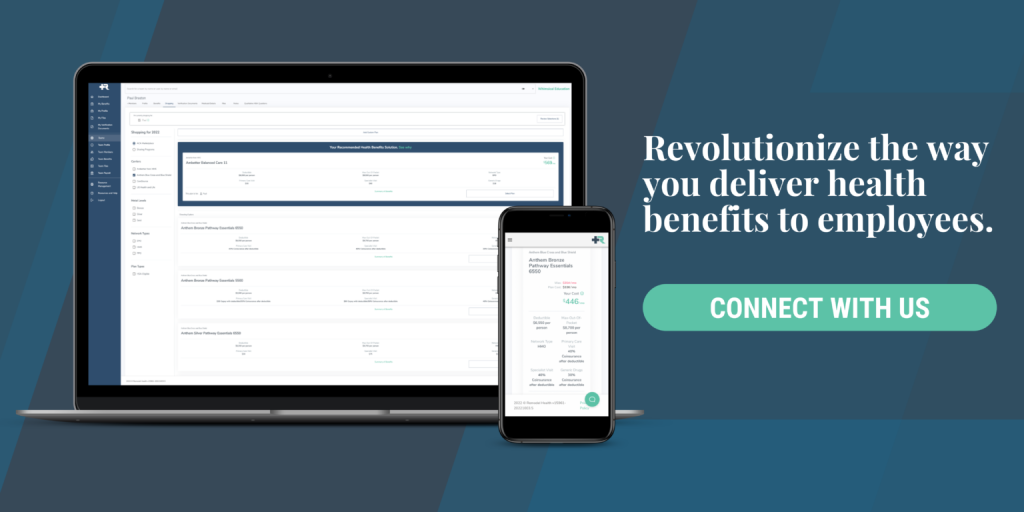
The Individual Coverage Health Reimbursement Arrangement (ICHRA) is a modern and flexible health benefit option for employers seeking to offer personalized healthcare coverage to their employees. As an employer or HR professional, understanding the ICHRA enrollment process is essential for a smooth implementation. In this blog post, we will provide a comprehensive, step-by-step guide to the ICHRA enrollment process for both employers and employees.
1. Employer Preparation: Establishing an ICHRA Plan
Before initiating the enrollment process, employers must establish an ICHRA plan that suits the needs of their organization. This involves determining the key components of the plan, including:
- Employee Eligibility: Decide which employees are eligible for the ICHRA, and if there are any specific eligibility requirements or waiting periods.
- Reimbursement Amounts: Determine the monthly reimbursement amounts for employees, taking into consideration factors such as job role, family size, and age.
- Plan Year: Establish the start and end dates of the plan year, which will dictate the coverage period for employees and the reimbursement deadlines.
- Compliance: Ensure the ICHRA plan complies with federal and state regulations, including the Affordable Care Act (ACA) and any applicable nondiscrimination rules.
2. Employee Education: Communicating ICHRA Benefits and Enrollment
Once the ICHRA plan is established, employers should provide employees with detailed information about the new health benefit option. This includes explaining the basics of ICHRA, the benefits it offers, and the specific details of the company’s plan. Employers should also inform employees of the enrollment process and any important dates or deadlines they need to be aware of.
3. Employee Enrollment: Selecting an Individual Health Insurance Plan
After employees have been educated about the ICHRA and their eligibility, they can begin the process of enrolling in an individual health insurance plan. Employees can choose a plan through various channels, including the Health Insurance Marketplace, a private exchange, or directly from an insurer. The enrollment process for employees typically involves the following steps:
Step 1: Research and Compare Plans
Employees should start by researching and comparing individual health insurance plans available in their area. They should consider factors such as coverage, deductibles, premiums, and provider networks when selecting a plan. Employees can use online tools, resources, and expert assistance to help them find the best plan for their needs.
Step 2: Enroll in a Plan
Once employees have selected a plan, they must complete the enrollment process. This may involve submitting an application through the Health Insurance Marketplace, a private exchange, or directly to the insurer. Employees should be prepared to provide personal information, such as their Social Security number and income details, during the enrollment process.
Step 3: Submit Proof of Insurance Coverage
After enrolling in a plan, employees will need to submit proof of their insurance coverage to their employer. This may include providing a copy of their insurance card or a confirmation letter from the insurer. Employers should provide clear instructions on how and when employees should submit this information.

4. Employer Verification: Confirming Employee Eligibility and Coverage
Once employees have enrolled in an individual health insurance plan, employers are responsible for verifying their eligibility for the ICHRA and confirming their coverage. This may involve reviewing submitted proof of insurance coverage and checking that the plan meets the minimum essential coverage requirements under the ACA.
5. Reimbursement Process: Managing ICHRA Claims and Payments
After employee eligibility and coverage have been verified, the reimbursement process can begin. Employers should provide employees with clear instructions on how to submit reimbursement claims, including:
- Required Documentation: Specify the documentation needed to support reimbursement claims, such as receipts, invoices, or Explanation of Benefits (EOB) statements.
- Claim Submission Process: Clearly outline the steps for submitting claims, including any forms or templates that must be completed, and the preferred method for submission (e.g., email, online portal, or mail).
- Deadlines: Inform employees of any deadlines for submitting claims, such as a specific date each month or a set number of days after incurring an eligible expense.
- Reimbursement Frequency: Communicate the frequency of reimbursements, whether they are issued monthly, quarterly, or on another schedule.
Employers should also establish a system for reviewing and processing reimbursement claims. This may involve assigning a dedicated person or team to handle claims, verifying the eligibility of expenses, and issuing reimbursements in a timely manner. Employers should also maintain accurate records of all ICHRA-related transactions for tax and compliance purposes.
6. Ongoing Communication and Support: Addressing Employee Questions and Concerns
Throughout the enrollment and reimbursement process, employers should maintain open lines of communication with their employees. This includes:
- Providing Updates: Keep employees informed of any changes to the ICHRA plan or enrollment process, such as updated reimbursement amounts, new eligible expenses, or regulatory changes.
- Addressing Questions and Concerns: Designate a point of contact within the organization to handle employee inquiries and provide support during the enrollment and reimbursement process. Encourage employees to reach out with any questions or concerns they may have.
- Gathering Feedback: Solicit employee feedback on the ICHRA experience, identify any areas for improvement, and make adjustments as needed to ensure a smooth and efficient process.
7. Annual Enrollment: Managing Renewals and Plan Changes
ICHRA enrollment is an ongoing process, with employees typically required to renew their individual health insurance plans each year during the annual Open Enrollment Period. Employers should remind employees of the upcoming Open Enrollment Period and any deadlines for submitting proof of renewed coverage.
Employees should also be informed of their options for making changes to their individual health insurance plans during the Open Enrollment Period, such as switching to a different plan or adding dependents. Employers should provide guidance on how employees should report any changes in coverage and update their ICHRA reimbursement details accordingly.
The ICHRA enrollment process is a crucial component of successfully implementing this innovative health benefit option. By following this step-by-step guide, employers can ensure a smooth enrollment experience for their employees, from researching and selecting individual health insurance plans to managing reimbursement claims and providing ongoing support. By effectively managing the ICHRA enrollment process, employers can empower their employees to take control of their healthcare choices and enjoy personalized, flexible coverage tailored to their unique needs.
We want to help you with the ICHRA enrollment process! Chat with us today!

Important Notice: Remodel Health does not intend to provide specific insurance, legal, or tax advice. Remodel Health always recommends consulting with your own professional representation to properly evaluate the information presented and its appropriate application to your particular situation.
